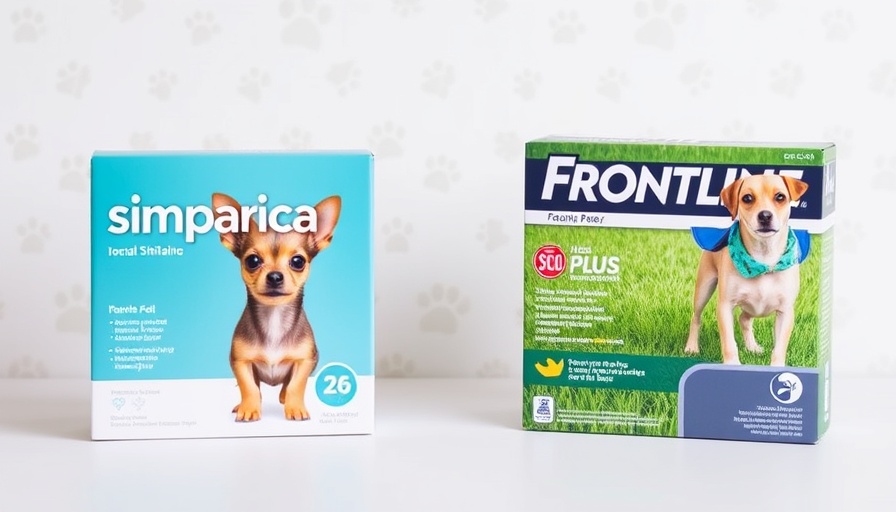
The Battle Against Fleas and Ticks: An Ongoing Concern for Dog Owners
Dogs are not just pets; they are beloved family members, and dog parents naturally want the best for their furry companions. However, one of the biggest challenges dog owners face is the threat of fleas and ticks. These pesky parasites not only cause discomfort but can also transmit serious diseases. Simparica and Frontline Plus are two formidable contenders in the battle against these infestations, and understanding their differences and similarities is essential for making informed choices.
Simparica vs. Frontline Plus: A Quick Overview of Each Product
Simparica is a flavored chewable that directly targets fleas and ticks. Its active ingredient, sarolaner, works by disrupting the nervous system of ticks and fleas, effectively eliminating the parasites. This medicated treat is suitable for dogs and puppies over six months old weighing at least 2.8 pounds, making it accessible for many canine companions.
On the other hand, Frontline Plus offers a topical solution designed to attack fleas and ticks through contact, preventing them from attaching to your dog's skin. Its formula can kill fleas, eggs, and larvae, and it also targets chewing lice and sarcoptic mange. Unlike Simparica, Frontline Plus is designed for dogs and puppies as young as eight weeks, with a minimum weight of five pounds.
Similarities That Matter: Timely Protection for Our Pets
Both Simparica and Frontline Plus provide comprehensive protection against a variety of ticks, including black-legged ticks, American dog ticks, and lone star ticks. Each requires monthly administration, simplifying the treatment routine for busy pet parents. Additionally, both products are effective in preventing Lyme disease, which is critical for the health of our dogs, particularly in regions where the disease is prevalent.
Distinct Features: Which Treatment Should You Choose?
While there are notable similarities, there are distinct differences that can sway your choice. For instance, Simparica targets Gulf Coast ticks and Asian longhorned ticks, providing a broader scope of protection that Frontline Plus doesn’t offer. However, Frontline excels in eliminating chewing lice and managing sarcoptic mange infestations, making it a better option for certain pet issues.
Choosing the right treatment also depends on your dog’s age and weight. Simparica is great for older puppies and dogs that meet the weight requirement, while Frontline caters to younger pups, allowing pet parents to find the right fit for their dog's needs.
Health and Wellness Implications of Flea and Tick Treatments
Understanding the differences between these treatments is not just a matter of preference; it can profoundly impact your dog's health and wellness. Both parasites can carry diseases such as Rocky Mountain Spotted Fever and Lyme disease, leading to long-term health issues if not addressed effectively. Whether you’re a veterinarian offering advice or a pet parent looking for the best for your furry friend, knowledge is your greatest ally in selecting appropriate parasite control.
Practical Tips for Managing Parasite Prevention
In addition to choosing the right product, it is vital for dog owners to stay vigilant. Regular grooming can aid in identifying and preventing infestations before they become a significant issue. Also, maintaining a clean living environment by washing pet bedding and using vacuum cleaners can significantly reduce the likelihood of flea and tick problems.
For those involved in pet nutrition or training, integrating a discussion on parasite prevention into consultations can help new pet parents understand the importance of ongoing prevention and care.
Common Misconceptions: Debunking Flea and Tick Treatment Myths
Many pet owners hold misconceptions about flea and tick treatments. Some might believe that natural remedies are enough to control parasites, but studies show that such methods often lack the efficacy needed for serious infestations. Others may think that all dogs can use the same treatment, but factors like age, weight, and susceptibility to allergens can guide different solutions.
Embracing Pet Care Trends: A Community Approach
The healthcare of pets extends beyond just medication. Growing trends in the pet care community emphasize preventative care and holistic approaches, fostering discussions among veterinarians, shelters, and pet food manufacturers about sustainable treatments. Engaging in these dialogues can yield new ideas that enhance the health of our pets overall.
In conclusion, the battle against fleas and ticks is ever-present but winning that battle starts with education. Whether you’re a veterinarian, a pet nutritionist, a groomer, or simply a pet lover, understanding the nuances between products like Simparica and Frontline Plus can make all the difference. Choose wisely, stay informed, and take proactive steps to keep your beloved canine companions healthy and happy.
For further insights into effective pet care products and trends, stay connected with our community and explore the resources available to you.
 Add Row
Add Row  Add
Add 




Write A Comment